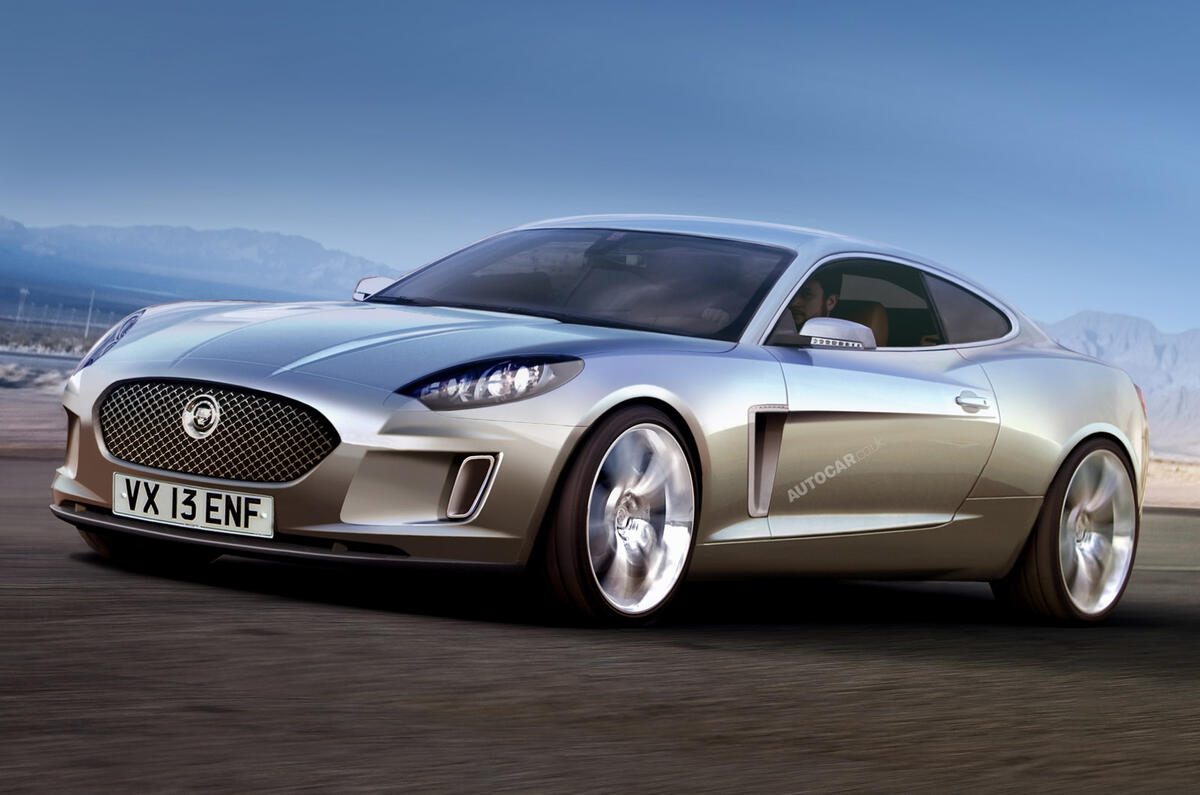Jaguar’s next-generation XK sports car will have a near-300bhp V6 diesel-powered variant in its line-up when it goes on sale around 2013.
The British manufacturer’s first ever diesel-powered sports car will get a 3.0-litre twin-turbo V6 to take on models like the BMW 635d, which has become the best-selling car in its class in the UK and Europe.
See Autocar's rendering of the new Jaguar XK
In the new, lightweight aluminium-alloy XK, the punchy 3.0 turbodiesel promises a practical mix of performance and economy, with 0-60mph in under five seconds and a combined average of 30mpg within its grasp.
With V8 levels of torque on offer, the XK D could even become the ‘sleeper’ in the range, boasting giant-killing in-gear acceleration for strong point-to-point driving pleasure.
Significantly, as the market has shifted towards diesel sports cars, it should also help to lift the XK’s production average back up to 10,000 to 12,000 units per year by exposing the XK to a large new market segment.
To refresh the Jaguar sports car concept, the XK will feature all-new sheetmetal and a new grille design that will ditch today’s ‘Spitfire wing’ oval shape, which dates back to the E-type of the 1960s.
This traditional shape will be dropped for two reasons. Firstly, it can’t easily be expanded to make a bolder front-end statement. “It just looks wrong when it’s stretched,” said one insider. Secondly, the oval shape has proved to be less of a success overseas, where research shows it can be confused with other brands’ grilles.
Instead, Jaguar is deriving a new shape from the oblong design launched on the XF, but with its own unique characteristics. “The studio has explored dozens of variations. It’s just a matter of choosing the right one,” said another insider.
The XK’s exterior sheetmetal is also expected to move Jaguar design further forward again, just as today’s Ian Callum-designed model did when it was launched in 2006. Although the final styling still has to be chosen, the favoured sketches are understood to feature crisper metalwork and more developed body surfacing.
As with today’s car, both hard-top coupé and open-top convertible body styles will be available. The cabrio will retain a soft-top roof for packaging, styling and marketing reasons.





Join the debate
Add your comment
New jaguar XK
i wrote to them some time ago and asked about the v6 turbo diesel for the xk, perish the thought, i got some snotty nosed, politically correct, mind your business reply.
quite repugnant really i got the impression that there was one in the offing.
the nose should stay the same it will only go back to the old style oval in time a bit like couture fashion repeating itself.
we need a manual box on these as well and cut out the one foot grandad.
jags are wanted by the young now not just the old. I'm a big bugger and i want a sports car and british!!!
I cant fit in a lotus will have to wait till they are second hand though as the prices new are ballistic and out of reach of the mere mortals who look and drool
Re: New Jaguar XK exclusive
Jaguar already did and it nearly bankrupted them. Their market research showed that people liked the shape of the xj and that there was no need to change it. So they didn't.
Sales fell off the edge of a cliff.
Re: New Jaguar XK exclusive
Focus Group, focus group...!